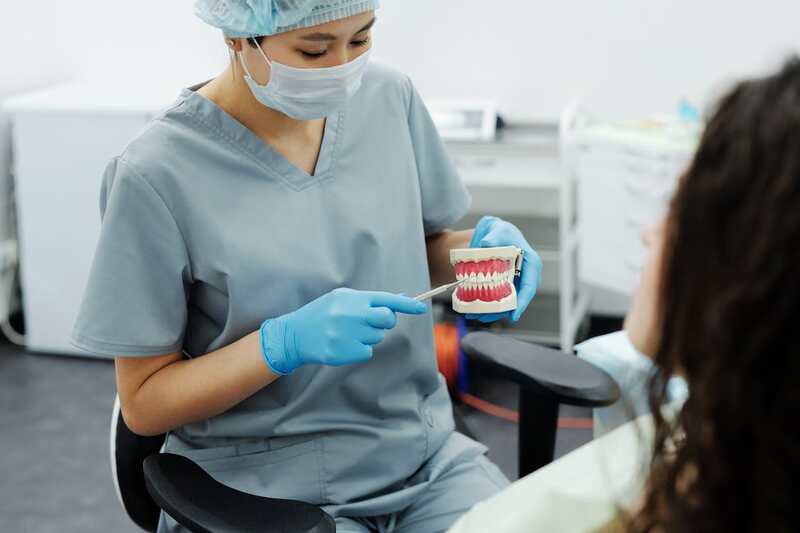If you’ve never been to an orthodontist, it can be hard to know what to expect. An orthodontist is a dentist trained to correct tooth and jaw problems such as underbites, widely spaced or crooked teeth, misaligned jaws and so much more. They’re the ones to call if you suspect your child needs braces, but it’s also wise to make an appointment before problems become apparent. Here’s what you need to know about your first orthodontist visit.
1. The Initial Meeting
On your first visit, you’ll check in at the front desk and fill out paperwork if you haven’t done so already online. Many clinics allow you to complete or begin filling out new patient forms ahead of time via a patient portal, which is an online medical record system. This might shorten your stay in the waiting room.
The dentist or hygienist might give you a tour of the office. Allow your kid to meet the staff and ask if they’ll show them the various dental tools they might use and what procedures they will do. This can go a long way toward putting a nervous child’s mind at ease.
2. Taking Medical and Dental History
The orthodontist will ask for a thorough record of your kid’s medical and dental history. It’s helpful to bring this paperwork to the appointment or upload it to the patient portal beforehand if you can. You can also ask your child’s doctor and dentist to fax the records over.
The orthodontist may ask you questions such as:
- Does your child take medications? Certain medicines can cause dry mouth or impact wound healing time, which are essential for your orthodontist to know. Some medications also interact with anesthesia.
- Does your child have diabetes? People with diabetes have an increased risk of periodontal disease.
- Is your child experiencing any tooth pain? This can indicate a problem your orthodontist must resolve before starting orthodontic treatment.
- How old is your child? Your children should see an orthodontist starting at age 7 to determine if they will need braces.
3. The Oral Exam and Imaging
This is the only hands-on part of the exam. It helps determine what type of orthodontic treatment your child may need and checks for irregularities or infections they must address before starting treatment. For example, the orthodontist may discover a cavity they must fill before proceeding.
Your child will sit in a dental chair. The orthodontist will turn on the overhead lights and might use tools to check your kid’s teeth and gums. They may take 3D scans or X-rays of your child’s teeth and jaw and could also take an impression using dental putty. It’s very similar to a standard dental appointment.
4. Creating a Treatment Plan
The orthodontist will discuss the best options to help your child achieve a healthy, beautiful smile. They may recommend braces, tooth removal, headgear, surgery, or something else entirely.
When creating your treatment strategy, you can also discuss your budget, insurance policy, and ideal treatment time frame. Many dentists allow patients to follow a payment plan if they’re uninsured or can’t afford to pay upfront. You can ask which treatments — if any — are cosmetic or elective and which ones are essential to your child’s health.
5. Asking Questions
It’s a good idea to ask questions during your first orthodontist visit. Some helpful questions include:
- How long will the treatment take? It takes an average of 24 months to complete braces treatment, but this is just an estimate.
- What are the options to correct the problem? This might include standard metal braces, clear plastic braces, a retainer or other options.
- Will my child need to avoid certain foods? While wearing braces, orthodontists generally advise patients to avoid hard candy, sticky foods like caramel or toffee, popcorn, and more. Ask your orthodontist which foods are safe to eat.
- Do you have after-school appointment times? This can mean the difference between a quick, hassle-free appointment and having to take your kid out of school for a couple of hours on a regular basis.
- Who can I contact in case of an emergency? Should your child break a tooth or have part of their braces come loose, it’s great to have an emergency dentist on call.
6. Scheduling Your First Appointment
Toward the end of your initial consultation, you’ll schedule your first actual appointment as long as you don’t have any additional dental work to do first.
Ask how long the next appointment will last. Getting braces can take an hour or more, so make sure you block off plenty of time on your schedule to pick your child up from school, drive to the clinic and head home afterward. If you live in the city, planning your appointment so you don’t have to go during rush hour can eliminate a lot of stress.
7. Rewarding Your Child
Going to the orthodontist is worth it. Make it a routine to take your child to get a smoothie, check out a comic book store, see a movie or otherwise reward them for being brave. Done consistently, your child might even start looking forward to their appointments! This is especially helpful for motivating a nervous child to get through their visit and it will be fun for both of you.
When to See an Orthodontist
Hopefully, this article gives you an idea of what you need to know about your first orthodontist visit. If your child is 7 years old or showing signs of jaw or tooth irregularities, it’s time for an appointment! Seeing an orthodontist before any problems crop up can ensure a lifetime of good dental health. To help you with your search, you can check out this dentist in Woodbridge.


